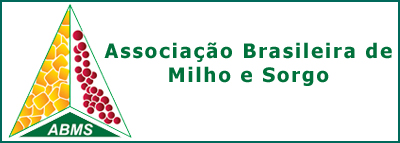ESTRATÉGIAS DE MANEJO DO ARRANJO DE PLANTAS VISANDO OTIMIZAR A PRODUTIVIDADE DE GRÃOS DO MILHO
DOI:
https://doi.org/10.18512/1980-6477/rbms.v18n1p47-60Keywords:
Zea mays, densidade, produtividadeAbstract
RESUMO – Este trabalho foi conduzido objetivando avaliar a resposta do milho ao incremento na densidade de
plantas, sob diferentes espaçamentos entre linhas. O experimento foi implantado em Lages-SC, nos dias 20/10/2014
e 21/10/2015. Foram testadas cinco densidades de plantas (3, 5, 7, 9 e 11 pl m-2) e dois espaçamentos entre linhas
(40 cm - reduzido, e 80 cm - convencional). Avaliaram-se características fenológicas, morfológicas, fisiológicas e a
produtividade em kg de grãos ha-1 do híbrido P30R50H. Os dados foram analisados estatisticamente pelo teste F, e as
médias foram comparadas pelo teste de Tukey e análise de regressão. A produtividade variou de 11.390 a 18.760 kg ha-1,
dependendo do arranjo de plantas testado. Ele aumentou linearmente 923 e 724 kg ha-1 para cada planta adicionada
por m-2 no espaçamento entre linhas de 40 cm em 2014/2015 e 2015/2016, respectivamente. A elevação na densidade
de plantas de 3 para 11 pl m-2 não promoveu assincronia floral, não reduziu a atividade fotossintética da folha índice,
nem aumentou a percentagem de plantas acamadas, quando se utilizou o espaçamento entre linhas reduzido. Portanto,
a utilização de densidades supraótimas (9 e 11 pl m-2) e espaçamento entre linhas reduzido (40 cm) foram estratégias
de manejo efetiva para otimizar a produtividade do milho.
Palavras-chave: Zea mays, densidade, espaçamento entre linhas, rendimento.
MANAGEMENT OF PLANT ARRANGEMENT
TO OPTIMIZE GRAIN PRODUCTIVTY IN MAIZE
ABSTRACT – This work was set aiming to evaluate maize response to the increase in plant population at different
row spacings. The experiment was conducted in Lages, SC, South of Brazil, on 10/20/2014 and 10/21/2015. Five plant
densities (3, 5, 7, 9 and 11 plants m-2) and two row spacings (40 cm – reduced; 80 cm – conventional) were tested.
Phenological, morphological and physiological traits, productivity (kg of grains per ha-1) of the hybrid P30R50 were
evaluated. Data were assessed by the F test and means were compared by the Tukey’s test and regression analysis.
Grain productivity ranged from 11,390 to 18,760 kg ha-1, depending on the plant arrangement. Linear increase of 923
and 724 kg ha-1 was observed for each added plant per m-2 at the row spacing of 40 cm, in 2014/2015 and 2015/2016,
respectively. The increase in plant density from 3 to 11 plants m-2 did not promote flower asynchrony, did not reduce
photosynthetic activity of the index leaf, neither enhanced the percentage of lodged plants when the reduced row
spacing was used. Therefore, the use of supra-optimum plant densities (9 and 11 plants m-2) and reduced row spacing
(40 cm) were efficient strategies of plant arrangement management to optimize maize grain productivity.
Keywords: Zea mays, density, row space, productivity.
Downloads
Published
How to Cite
Issue
Section
License
Authors retain copyright and grant the journal right of first publication with the work simultaneously licensed under the Creative Commons Attribution License that allows the sharing of work and recognition of the work of authorship and initial publication in this journal.
Authors are able to take on additional contracts separately for non-exclusive distribution of the version of the paper published in this journal (eg, in an institutional repository or publish as a book), with acknowledgment of its initial publication in this journal.
Authors are permitted and encouraged to post their work online (eg, in institutional repositories or on their website) at any point before or during the editorial process, as this may leadto productive exchanges, as well as increase the impact and citation of published work.



